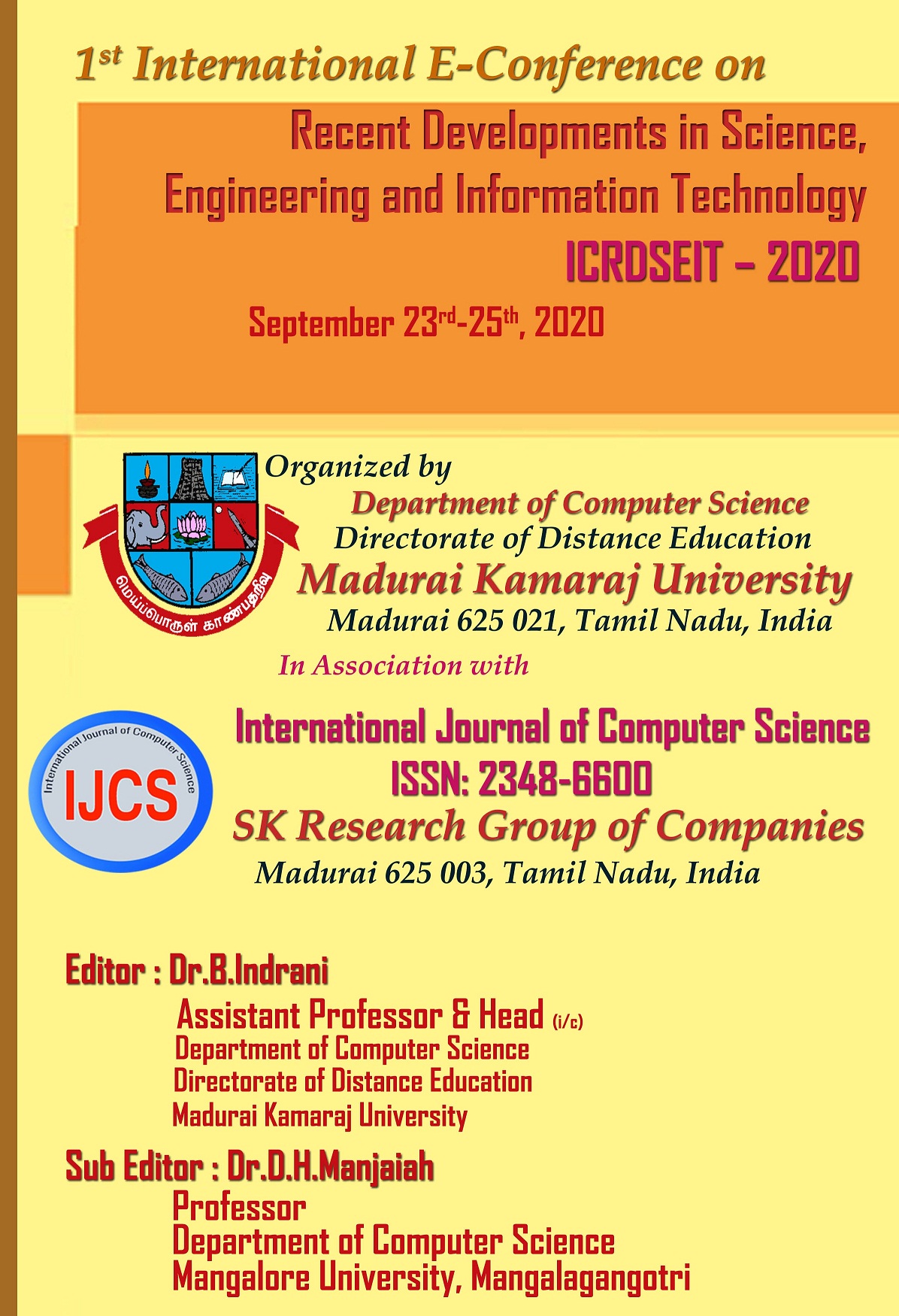Role of Unsupervised, Supervised and Regression Algorithm for Medical Image Segmentation: A Study
1st International E-Conference on Recent Developments in Science, Engineering and Information Technology on 23rd to 25th September, 2020 Department of Computer Science, DDE, Madurai Kamaraj University, Tamil Nadu, India. International Journal of Computer Science (IJCS) Published by SK Research Group of Companies (SKRGC)
Download this PDF format
Abstract
Different strategies are accessible in image processing for the division for pictures and are comprehensively grouped into three classes. i.e: Unsupervised, Supervised and Regression Algorithm. Before we start any research work especially medical image segmentation, we have must have to be aware with which we need to start research work for Segmentation procedure. As the target and picture information base, we need to be very specific on choosing one of the above strategies. All these strategies dependent on reviews we will consider the affirms which technique is substantial for which research work. In this paper we will get a clear vison of the major categories of segmentation procedure suitable for the research.
References
[1]. Mariette Awad, Rahul Khanna. ?Efficient Learning machines: Concepts and Applications?. Apress Publishers, 2015.
[2]. Teng Xiuyi1, Gong Yuxia1. ?Research on Application of Machine Learning in Data Mining?. IOP Conf. Series: Materials Science and Engineering, 2018.
[3]. M. Praveena, V. Jaiganesh, ?Literature Review on Supervised Machine Learning Algorithms and Boosting Process?. International Journal of Computer Applications, ISSN No. 0975 – 8887, vol. 169, 2017.
[4]. Kajaree Das, Rabi Narayan Behera. "A Survey on Machine learning: Concept, Algorithms and Applications", International Journal of Innovative Research in Computer and Communication Engineering. vol. 5, 2017.
[5]. S.B. Kotsiantis.?Supervised Machine Learning: A Review of Classification Techniques?, Informatica. pp 249-268, 2007.
[6]. Rob Law, "Room occupancy rate forecasting: a neural network approach", International Journal of Contemporary Hospitality Management, vol. 10 Issue 6, pp 234 – 239, 1998.
[7]. Zhongsheng Hua, Bin Zhang, "A hybrid support vector machines and logistic regression approach for forecasting intermittent demand of spare parts", Applied Mathematics and Computation 181, pp 1035–1048, 2006.
[8]. Real Carbonneau, Kevin Laframboise, Rustam Vahidov, "Application of machine learning techniques for supply chain demand forecasting ", European Journal of Operational Research 184, pp 1140 1154, 2008.
[9]. Kuan-Yu Chen, Cheng-Hua Wang, ?Support vector regression with genetic algorithms in forecasting tourism demand", Tourism Management 28, pp 215–226, 2007.
[10]. Wei-Chiang Hong, Yucheng Dong, Li-Yueh Chen, Shih-Yung Wei, ? SVR with hybrid chaotic genetic algorithms for tourism demand forecasting?, Applied Soft Computing 11, pp 1881–1890, 2011.
[11]. M. H. Fazel Zarandi, Esmaeil Hadavandi, B. Turksen, "A Hybrid Fuzzy Intelligent Agent-Based System for Stock Price Prediction", International Journal Of Intelligent Systems, Vol. 00, pp 1–23, 2012.
[12]. Jamal Shahrabi, EsmaeilHadavandi, Shahrokh Asadi, "Developing a hybrid intelligent model for forecasting problems: A case study of tourism demand time series", Knowledge-Based Systems 43, pp 112–122, 2013.
Keywords
Segmentation, Unsupervised, Supervised and Regression Algorithm.

